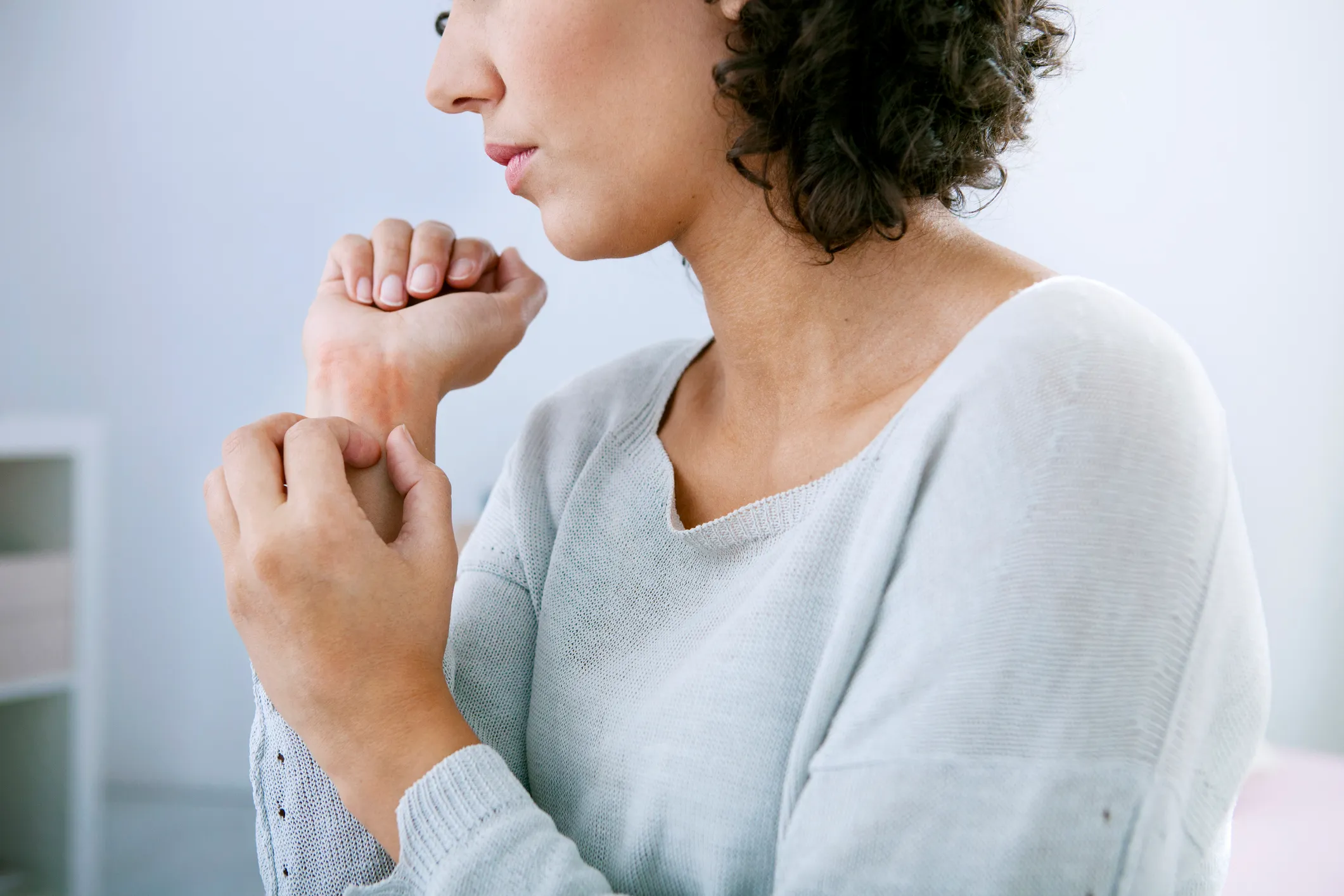Eczema refers to inflammatory skin problems that affect men, women, and children. The latest research has not pinpointed an exact cause, but experts on eczema believe that the biggest contributing factors are genetics and environmental conditions. Atopic dermatitis plagues the most people, and no cure is available for it.
Regardless of the severity, dermatitis can be difficult to live with because it can produce debilitating sensations that will affect one’s well-being. In the United States, approximately 31 million people are suffering from some kind of eczema, including 17.8 million people living with atopic dermatitis.
Signs and Symptoms of Eczema
Wherever eczema develops, it damages the skin in several ways. Redness is often the first symptom that appears, and then the affected areas become dry, sensitive and itchy. Soreness may occur as the skin becomes more irritated. Also, clusters of flaky bumps will form and leak fluid if scratched.
Keep in mind that symptoms vary from person to person, and they can manifest anywhere on the body. Typical areas include the face, the neck, and the hands.
Treatments for Eczema
In most cases, relieving symptoms requires little effort. Many sufferers improve their situations by simply avoiding irritants, such as harsh detergents and bar soaps that dry out the skin. Other effective solutions include at-home techniques, over-the-counter oils, and prescription drugs.
Wet Dressings
Although these are usually put on children, anyone struggling with acute eczema can benefit from using wet dressings, which are safe and easy to make. The idea is to cover the areas with a damp cloth or gauze. By applying a special cream, like hydrocortisone, to the skin first, better results can be achieved. Most people enjoy immediate relief because the dressings create a moist environment that eliminates dryness and the urge to scratch. This cost-effective method can be used on a regular basis. The only side effect may be a little discomfort after the dressings dry.
Topical Steroids
More doctors are recommending the use of topical steroids because they have anti-inflammatory properties, which are proven to make the skin feel better amid a flare-up. Sufferers can opt for ointments, gels, creams, foams or lotions. Due to their effectiveness, only a thin layer needs to be applied, and the irritation will gradually diminish. Products like Cortizone incorporate aloe vera with vitamins A and E to provide fast and noticeable relief.
Parents of children under the age of 12 should consult their child’s doctor before using topical steroids, considering they are known to have mild, long-lasting and even permanent side effects. Top problems reported include skin atrophy, stretch marks, headaches, heartburn, and insomnia.
Most side effects, however, occur after improper or prolonged use. For this reason, adhering to the recommended instructions is just as important as being patient while battling eczema. Depending on how bad the condition is, desired outcomes can only be achieved through trial and error.
Calcineurin Inhibitors, TCIs
Topical calcineurin inhibitors (TCIs) work not only on the skin but also on the immune system. The two types available are Protopic ointment and Elidel cream, and a prescription is required for both products. Anyone over the age of two can use TCIs to treat mild, moderate and even severe atopic eczema. However, people with a compromised immune system should choose a different treatment.
When applied, TCIs soothe the skin and block the hyper cells that give rise to inflammation, so they are excellent for reducing the occurrence of symptoms and flare-ups. When it comes to side effects, users have reported a slight burning sensation, cold sores, and blisters. These problems usually subside within a week. Unlike some topical steroids, TCIs are not found to cause skin atrophy.
Phototherapy
If ointments and creams fail to produce adequate relief, phototherapy may help in the treatment of eczema — 70 percent of users agree that this method gets the job done. UVB and UVA lights work by reducing symptoms and increasing the production of vitamin D. They also help the skin by eliminating a high percentage of bacteria.
Whether eczema is present all over the body or not, patience is required because satisfactory results do not come right away. Multiple treatments will be needed, and the time frame may be two or more months. After going through phototherapy, possible side effects include headaches, nausea, cataracts, premature skin aging, and some risk for melanoma.
Oral and Injectable Medications
The market provides a good selection of medications that can help sufferers of eczema. The most popular ones are azathioprine, cyclosporine, mycophenolate mofetil, methotrexate, and prednisone.
Dupixent, or dupilumab, was approved by the U.S. Food and Drug Administration in 2017. This medication is aimed at treating moderate and severe eczema. Men and women, who are 18 or older, can safely take it. Once inside the body, Dupixent will work on the immune system to help prevent inflammation. Possible side effects include eye problems, allergic reactions, throat pain, swelling, and cold sores.
For anyone who is dealing with eczema, the good news is that most solutions are affordable and easy to use. Just be careful when choosing between ointments and creams. They come available in different strengths, and applying a potent cream to sensitive areas may do more harm than good.
Nevertheless, using one of the five treatments mentioned above can help end the unpleasant sensations that accompany eczema. When it comes to babies, scheduled baths with gentle cleansers can make a positive difference, but creating a treatment program with help from a doctor may be the best route.
